Related Research Articles
Iconology is a method of interpretation in cultural history and the history of the visual arts used by Aby Warburg, Erwin Panofsky and their followers that uncovers the cultural, social, and historical background of themes and subjects in the visual arts. Though Panofsky differentiated between iconology and iconography, the distinction is not very widely followed, "and they have never been given definitions accepted by all iconographers and iconologists". Few 21st-century authors continue to use the term "iconology" consistently, and instead use iconography to cover both areas of scholarship.

Erwin Panofsky was a German-Jewish art historian, whose academic career was pursued mostly in the U.S. after the rise of the Nazi regime.
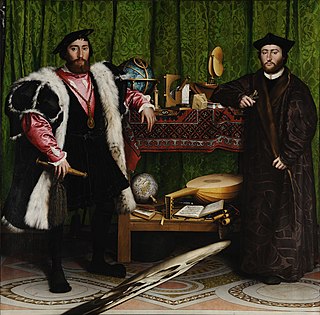
Iconography, as a branch of art history, studies the identification, description and interpretation of the content of images: the subjects depicted, the particular compositions and details used to do so, and other elements that are distinct from artistic style. The word iconography comes from the Greek εἰκών ("image") and γράφειν.

Ernst Alfred Cassirer was a German philosopher. Trained within the Neo-Kantian Marburg School, he initially followed his mentor Hermann Cohen in attempting to supply an idealistic philosophy of science.

The Warburg Institute is a research institution associated with the University of London in central London, England. A member of the School of Advanced Study, its focus is the study of cultural history and the role of images in culture – cross-disciplinary and global. It is concerned with the histories of art and science, and their relationship with superstition, magic, and popular beliefs.

Aby Moritz Warburg, better known as Aby Warburg, was a German art historian and cultural theorist who founded the Kulturwissenschaftliche Bibliothek Warburg, a private library, which was later moved to the Warburg Institute, London. At the heart of his research was the legacy of the classical world, and the transmission of classical representation, in the most varied areas of Western culture through to the Renaissance.
Edgar Wind was a German-born British interdisciplinary art historian, specializing in iconology in the Renaissance era. He was a member of the school of art historians associated with Aby Warburg and the Warburg Institute as well as the first Professor of art history at Oxford University.
The Vienna School of Art History was the development of fundamental art-historical methods at the University of Vienna. This school was not actually a dogmatically unified group, but rather an intellectual evolution extending over a number of generations, in which a series of outstanding scholars each built upon the achievements of their forerunners, while contributing their own unique perspectives. Essential elements of this evolution became fundamental for modern art history, even if the individual methods can today no longer claim absolute validity.
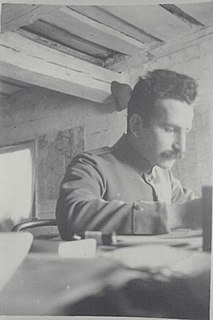
Richard Georg Salomon was an historian of eastern European medieval history and historian of the Episcopal Church in the United States, who taught at the University of Hamburg in Germany and at Kenyon College and its Episcopal Church seminary Bexley Hall in Ohio USA.
Horst Waldemar Janson, who published as H. W. Janson, was a Russian-born German-American professor of art history best known for his History of Art, which was first published in 1962 and has since sold more than four million copies in fifteen languages.
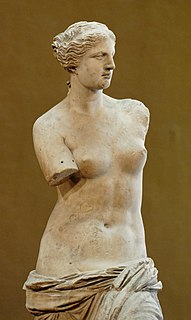
Art history is the study of aesthetic objects and visual expression in historical and stylistic context. Traditionally, the discipline of art history emphasized painting, drawing, sculpture, architecture, ceramics and decorative arts, yet today, art history examines broader aspects of visual culture, including the various visual and conceptual outcomes related to an ever-evolving definition of art. Art history encompasses the study of objects created by different cultures around the world and throughout history that convey meaning, importance or serve usefulness primarily through visual representations.
Eduard Bargheer was a German painter and printmaker. His early oeuvre had a close affinity to Expressionism.
Ludwig Heinrich Heydenreich was a German art historian specialized in Italian Renaissance art. From 1947 to 1970, he served as director of the Zentralinstitut für Kunstgeschichte, Munich.
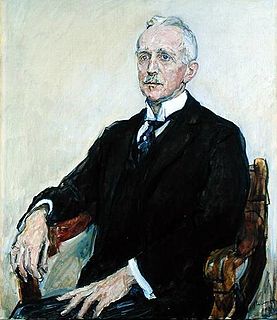
Theodor Gustav Pauli was a German art historian and museum director in Bremen and Hamburg.
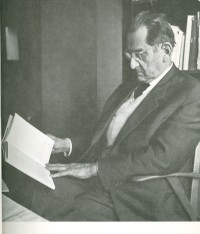
Kurt Badt was a German art historian.
William S. Heckscher (1904–1999) was a German art historian and professor of fine art and art history at universities in the United States, Canada, and the Netherlands.

Jan Białostocki was one of the most famous Polish art historians of the 20th century.
Charles de Tolnay, born Károly von Tolnai, was a Hungarian art historian and an expert on Michelangelo. According to Erwin Panofsky, he was "one of the most brilliant art historians" of his time.

The Warburg Haus, Hamburg is a German interdisciplinary forum for art history and cultural sciences and primarily for political iconography. It is dedicated to the life and work of Aby Warburg and run by the University of Hamburg as a semi-independent seminar. "It issues a series of art historical publications directly modeled on the original institution's studies and lectures, and is a sponsor of the reprinted 'Study Edition' released through the Akademie Verlag in Berlin."
Dora Panofsky was a German-American art historian.
References
- ↑ Elizabeth Sears, "American Iconography: Assessing FSA Photographs, 1945", Visual Resources: An International Journal of Documentation, Volume 30, Issue 3, 2014, pp. 239-254.
- ↑ "A Symposium on Erwin Panofsky", The Burlington Magazine, Volume 134, No. 1073 (1992), pp. 547-48.
- ↑ Dictionary of Art Historians: Janson, H(orst) W(oldemar).
- ↑ Thomas Roeske, "Traces of Psychology: The Art Historical Writings of Ernst Kris", American Imago, Vol. 58, No. 1 (2001), pp. 463-477.